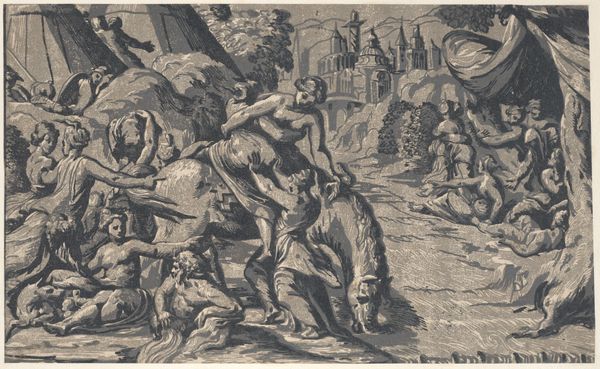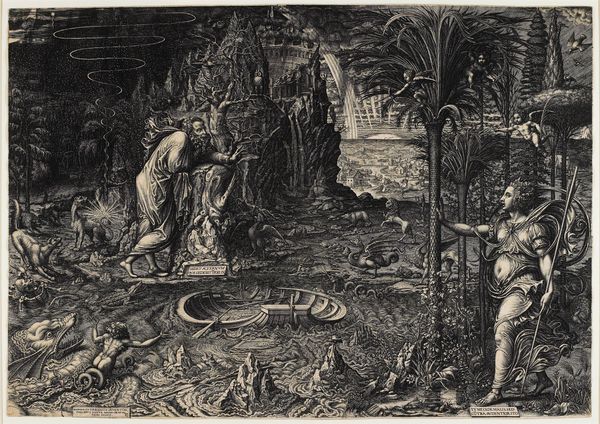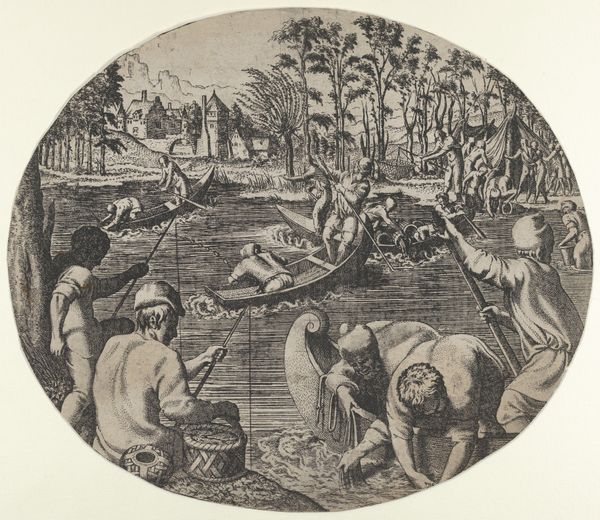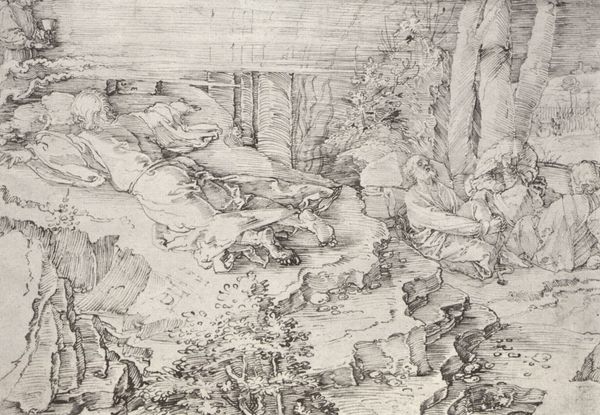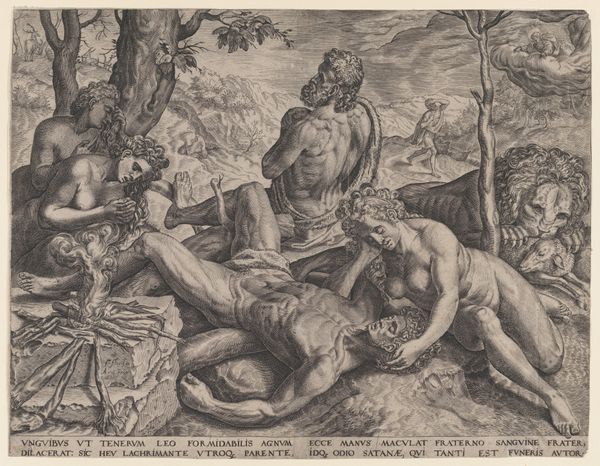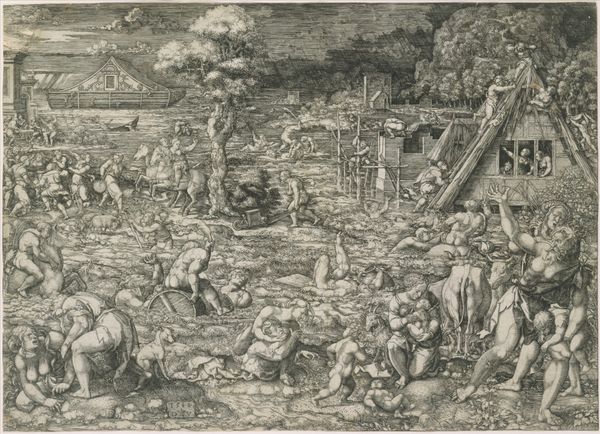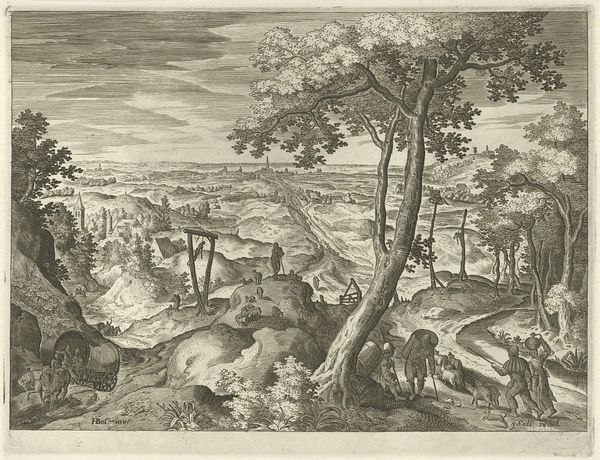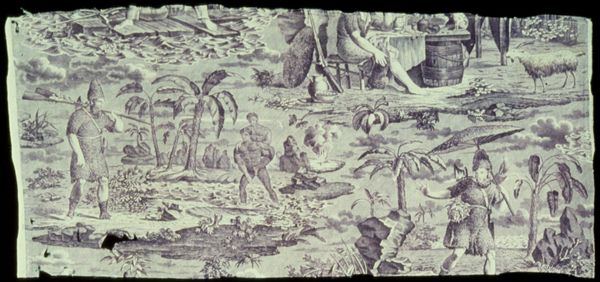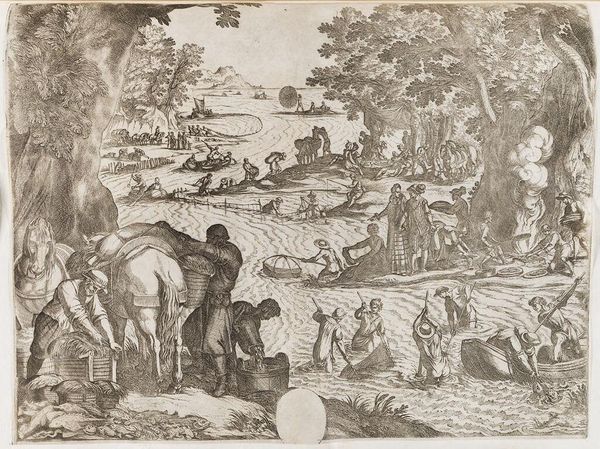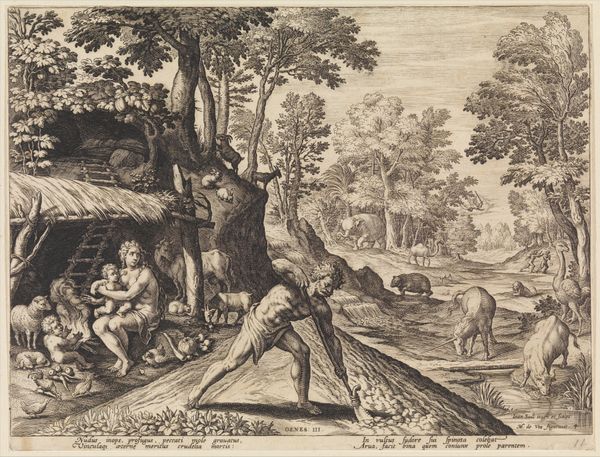
painting, oil-paint
#
portrait
#
narrative-art
#
painting
#
oil-paint
#
landscape
#
figuration
#
oil painting
#
jesus-christ
#
christianity
#
history-painting
#
italian-renaissance
Dimensions: 145 x 185 cm
Copyright: Public domain
Editor: We’re looking at Vittore Carpaccio’s "Lamentation of Christ," an oil painting from 1510. It’s…bleak. There's a body laid out on what looks like a mortuary table surrounded by skulls, and then a gathering of mourners in a desolate landscape. How do you interpret this work in relation to its historical moment? Curator: The “Lamentation” is certainly heavy. Think about the context: Carpaccio, an Italian Renaissance artist, is creating this image against a backdrop of intense social and political upheaval. The Republic of Venice, Carpaccio's home, was struggling to maintain its power, fighting wars. There were plague outbreaks. Does the foregrounded imagery of death resonate with this socio-political climate of fragility, perhaps underscoring the human cost of conflict and the omnipresence of mortality? Editor: Definitely. And there’s that separation between the preparation of the body and the more emotional mourning further away. Almost a visual representation of class differences, perhaps? Curator: That’s interesting! The composition could also speak to the diverse ways communities grapple with loss. The foreground is all skulls and a stark corpse, perhaps indicating a medicalized, ritualized handling of the dead. Meanwhile, the emotional expressions of grief among the figures in the midground highlight how shared sorrow becomes a unifying force. Can we see in their shared grief a critique of social fragmentation, even as it also documents it? Editor: I hadn’t thought about it that way. I was so focused on the bleakness. Curator: Art, even when depicting lament, often points toward a more profound conversation. In what ways can we acknowledge grief and yet still discover a collective will to thrive, a reason to construct a more compassionate future? It also opens a dialogue on marginalized identities impacted by the religious norms represented in the painting. Editor: This makes me consider the ways communities mourn and heal collectively today. Thanks for sharing. Curator: It was a thought-provoking observation; thank you for offering a fresh view of a historic artwork.
Comments
No comments
Be the first to comment and join the conversation on the ultimate creative platform.

